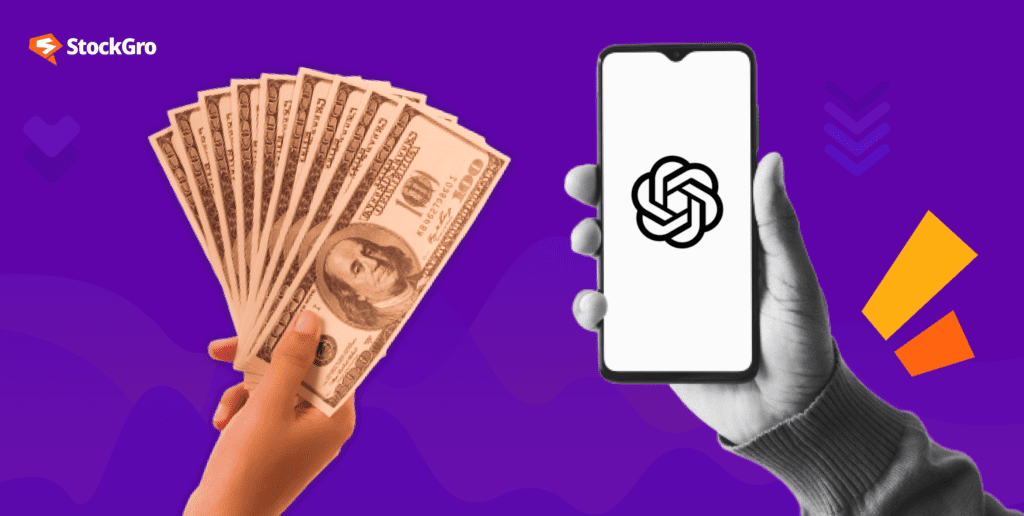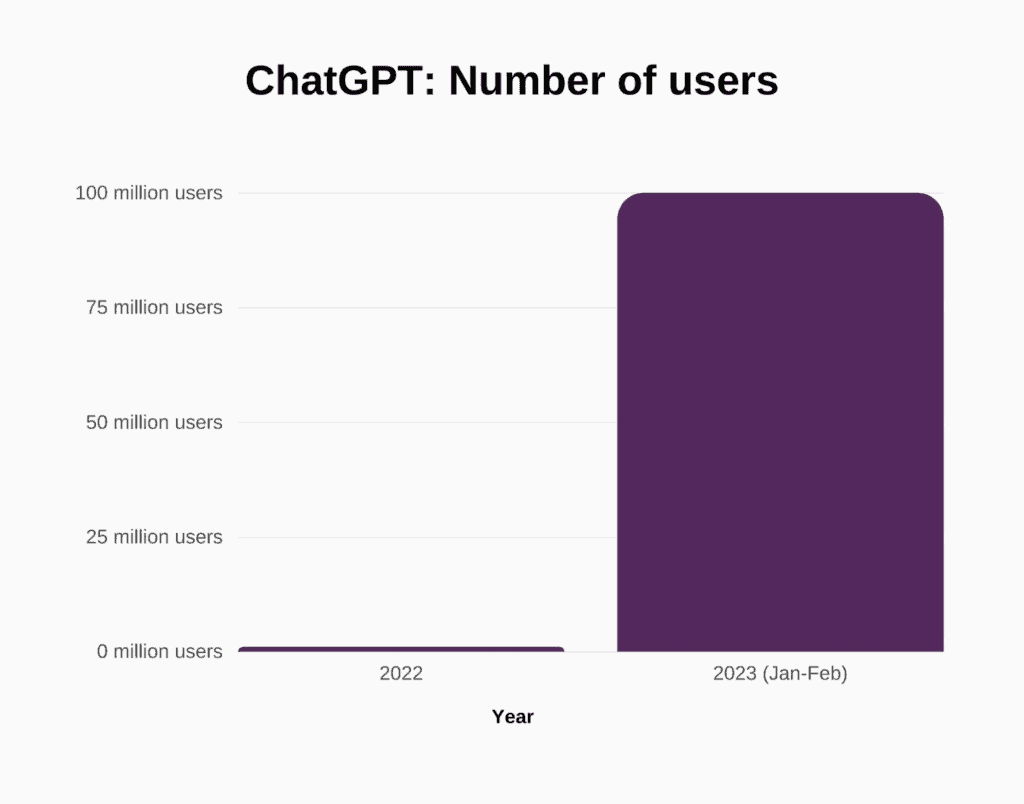
Did you hear – ChatGPT has over 100 million users, according to the latest estimates! That’s more than the population of Turkey or Vietnam. If that’s not enough, the AI tool generates 1 billion monthly visitors. And yet, the tool is completely free (except if you subscribe to a specific plan). The question is – how do the creators earn money?

Well, you can hear the answer straight from the horse’s mouth. Here’s a breakdown of what the AI tool said. But before that, let’s understand what exactly constitutes ChatGPT.
Also Read: Capital gains tax – overview, types, and current rates
What is ChatGPT?
In simple terms, ChatGPT is a tool based on artificial intelligence (AI) and created by OpenAI. The latter is an AI-based research laboratory based in the United States. The technology is based on GPT – Generative Pre-Trained Transformer. Sounds fancy, right? What does that even mean?
Well, this technology understands and produces human-like responses, using technology. And so, the primary goal of this tool is to talk to users, answer their questions, collate information…basically, become your mind’s personal assistant.
True, the responses may not always be right. But imagine a non-human entity giving human-like responses? Isn’t that baffling?
While you may go into an existential crisis with “AI replacing humans”, now’s not the time. For there is an important question: How does ChatGPT make money?
Well, if you ask the tool itself, here’s what it says –
How ChatGPT makes money – AI tool responds
The tool started off with a not-so-shocking revelation: ChatGPT itself does not earn money, for obvious reasons. But, OpenAI, the operating company, does earn revenue through its AI-based baby.
Find out in the tool’s own words –
ChatGPT API Access
OpenAI provides paid access to the ChatGPT API, which enables developers and businesses to integrate the AI into their applications, services, and products. Users are typically charged based on usage, such as the number of tokens (words) generated or API calls made.
ChatGPT
For those wondering, API stands for application programming interface. It is a method through which one program can integrate with another program and communicate with each other. Sort of like the glue that sticks two books together.
Now picture this – you are starting a small business. Maybe a bakery or a thrift store. You decide to communicate with people via WhatsApp. Of course, as the business grows, your customer-base expands. And so, it won’t be possible to answer all queries. So what do you do? You create a WhatsApp bot.
To leverage this bot and provide human-like responses – both fast and 24/7, you decide to integrate ChatGPT AI.
Here’s a more real-time example –
So, how does the pricing model work? Let’s take tokens per minute (TPM) into account:
Remember that each token is equal to one word. Sometimes, 1000 tokens can be worth 750 words. So the system might be a bit ambiguous.
| AI model type | 1 TPM Equals | Rate |
| davinci | 1 TPM | $0.0200 / 1K tokens |
| curie | 25 TPM | $0.0020 / 1K tokens |
| babbage | 100 TPM | $0.005 / 1K tokens |
| ada | 200 TPM | $0.0004 / 1K tokens |
Note: Davinci, Curie, Babbage and Ada are different versions of the AI tool, having different speed, cost and capability. While Davinci is the most expensive and capable, Ada is the most cost-efficient.
Of course, ChatGPT API has multiple use-cases. But each use-case requires you to pay a price. And this is one way for OpenAI to earn money.
You may also like: Insurance 101: How to protect yourself and your assets!
ChatGPT Subscription Plans
OpenAI offers subscription plans for ChatGPT, catering to individual users, businesses, and developers. Subscription plans can provide benefits such as priority access, faster response times, and access to premium features or improvements.(In quotes)
ChatGPT
Let’s look at the pricing for each subscription plan:
- ChatGPT Plus – USD 20(or Rs.1650) per month in India; offers availability during high demand, faster response speed, etc.
- GPT 4 – can interpret both image and text-based prompts
| Model | Prompt | Completion |
| 8K context | $0.03 / 1K tokens | $0.06 / 1K tokens |
| 32K context | $0.06 / 1K tokens | $0.12 / 1K tokens |
- GPT 3 – can be used to write stories, poetry, etc
| Model | Usage |
| gpt-3.5-turbo | $0.002 / 1K tokens |
All this looks like an AI-based menu card. But the point is simple – these subscription plans are a second revenue stream for OpenAI.
Custom Solutions
OpenAI may also partner with companies, organisations, or governments to develop custom AI solutions based on ChatGPT. This can include developing specific AI models or applications that cater to a partner’s unique requirements, often for a negotiated fee or revenue-sharing agreement.
ChatGPT
Only recently, Microsoft, a tech giant extended its partnership with OpenAI. This partnership includes a billion-dollar investment in the research organisation.
Question is – how would Microsoft benefit?
Well, Microsoft will get a chunk of OpenAI’s profits. And this chunk is huge – a whopping 75 percent of profits, till the research organisation earns back the USD 13 billion investment.
Interestingly, Microsoft also invested USD 1 billion in 2019 and USD 2 billion in 2021, quite coyly. Even this has to be earned back, according to reports.
Additionally, Microsoft can also sell OpenAI’s software, even though the latter independently renders its services. So, this multi-billion dollar deal is a bit too complicated. However, it is surely a revenue stream for OpenAI.
Research, Grants, and Funding
OpenAI, as a research organization, may receive grants or funding from various sources such as governments, private institutions, and philanthropists to advance AI research and development. This funding can help support the ongoing development and maintenance of AI models like ChatGPT.
ChatGPT
Ultimately, OpenAI functions as a startup, even though they proclaim to be a “research organisation”. According to Crunchbase, the US-based firm has had 6 funding rounds comprising of 9 investors and amounting to USD 13 billion, approx (as mentioned before).
Thus, it is safe to say that while ChatGPT, the AI tool, has no money, OpenAI has at least four active revenue streams. And chances are the number would increase as the firm announces more AI tools!
And for us, life would become easier, with a multi-faceted AI tool.

